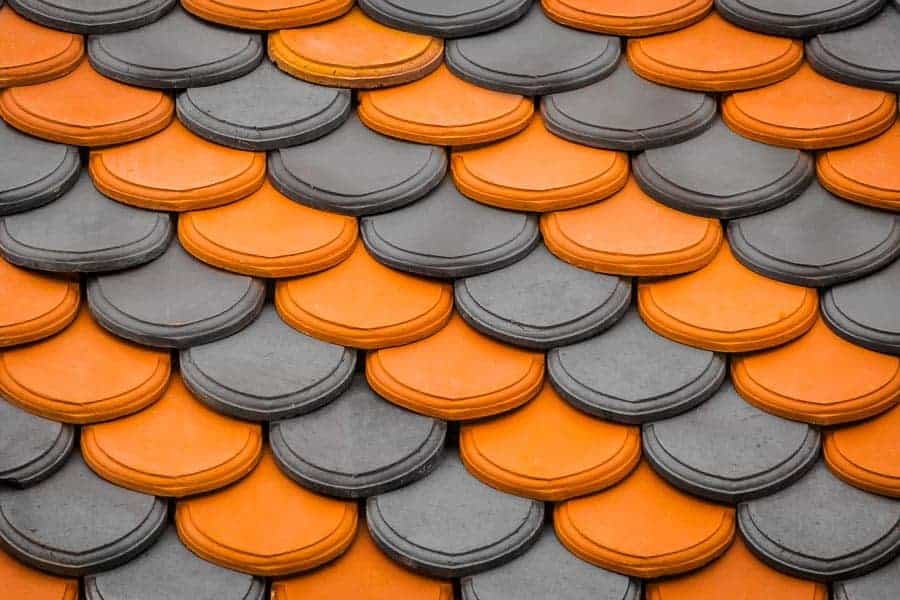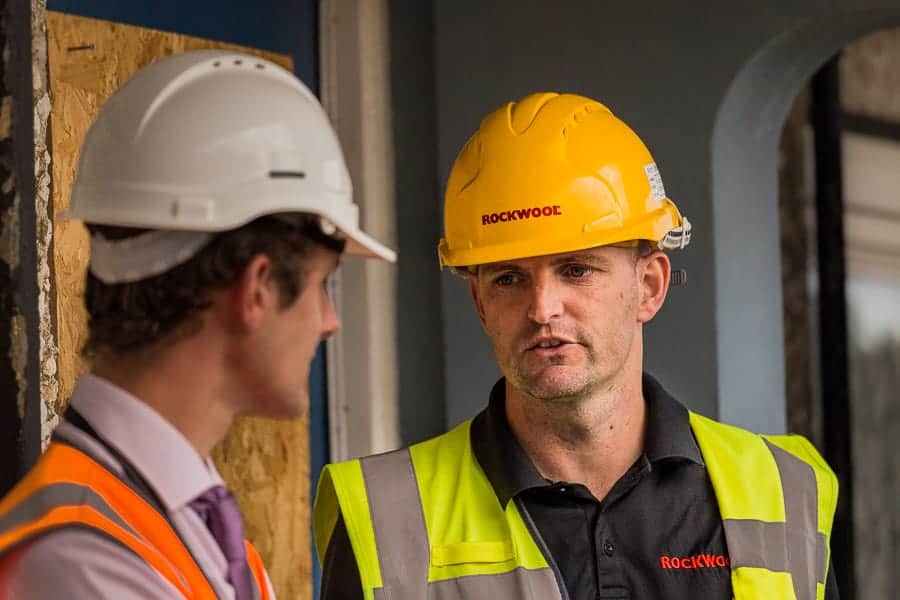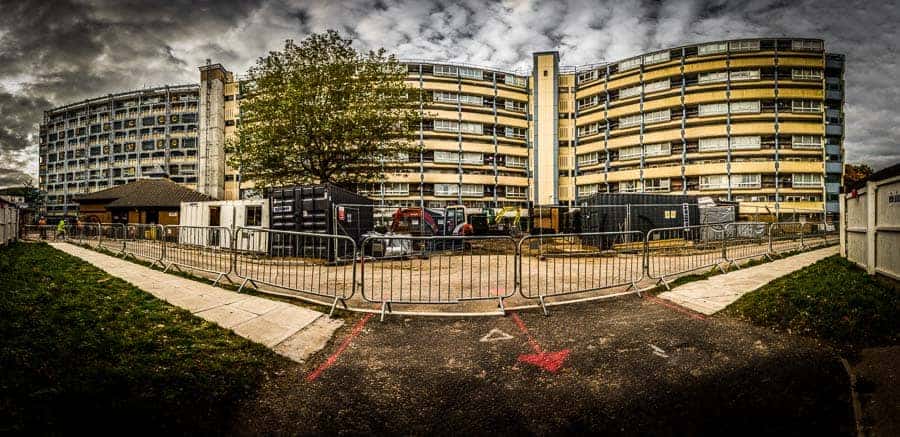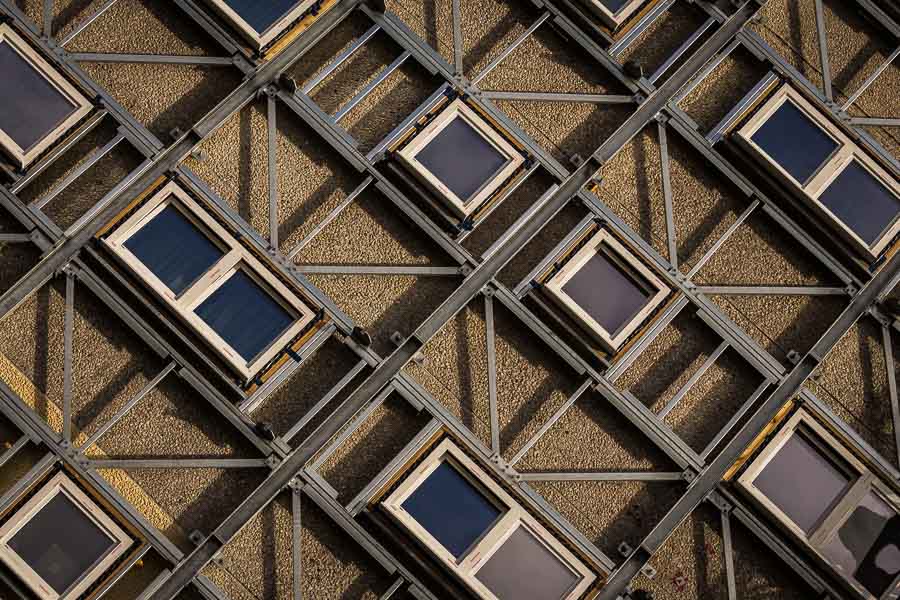This is the second in my series of articles where I tell you all about being an architectural photographer. In this article I will dive deeper into 10 areas that you need to consider when seeking architectural photography work. I will you things to think about which will help you turn a hobby into a successful business?
To run a business you need money, but where does the money come from? I will write about the following 10 areas of the business side of architectural photography
- Clients
- Who is your ideal client?
- Marketing
- Branding
- Website
- SEO
- Social Media
- Pricing
- Commercial Matters
- Professionalism
I know – not a lot about photography in there, but this is the reality of being an architectural photographer. Thankfully I will get onto photography in the next article, but for now let’s stick with the business side of things. I will try to keep things as entertaining as I can, but please bear with me – this is a serious subject. As I said in the previous article – boring but important!
After all, you need clients before you take photographs of buildings for money.
Which takes me nicely back to that list of 10 tips.
1 – Clients
Who are potential clients for architectural photography work?
Without paying clients there is no business. So, this is a great place to begin.
Who are the main parties involved in a construction project? In the UK they are as follows
- Architects
- Structural engineers
- Mechanical and electrical engineers
- Other specialist designers and engineers
- Construction companies
- Sub-contractors
- Product manufacturers
- Material suppliers
- Developers
- Finance companies
- Marketing companies
- Building owners
- Building occupiers
- Estate Agents/ real estate agents
- Investors
- Bankers
- Statutory consultees – planning, Building Regulations, environmental issues.
Whilst the names might change elsewhere in the world, the principles are the same.
From this long list I have two main clients
Architects
Product manufacturers
2 – Who is your ideal client?
You need to work this out. Mine are
Architects
Architects want their work photographing. Inside,

And the outside. Details are important.

Product manufacturers
Branding is important to manufacturers. And people. Real people.

As well as the big picture.

Why not the others? This is an interesting question.
Architects obviously value design. And architects need high quality photography of their designs to display their skills beyond the immediate environment of the building that they have designed.
Architects need high quality imagery to attract new clients.
Architects understand architectural photography, and appreciate a photographer who can creatively photograph their work to enable them to display their work at its best to the outside world.
Product manufacturers are very similar when it comes to their approach to the value to them of photography.
I have found that the other parties do not place such an emphasis on the quality of the design, and are more driven by price for photography. This is entirely normal in the cut-throat contracting world. I know – I have spent many years working in it!
I am a big fan of the 80/20 principle. That is why I focus most of my marketing work on the market that values and needs what I produce – high quality architectural photography. OK – that is who done.
3 – Marketing
How do you find clients? How do clients find you? Do you pay for marketing/ advertising?
As I develop my business I am working on the following principles.
Printed advertising material does not work anymore.
Paid advertising is hit and miss at best.
Directories are fine in that they provide an external link to my website, which has value, but other than that do not provide me with any work.
Enough people are happy to search for services on Google. Not everyone but enough people to make that my point of focus. I don’t want everyone asking me to price work after all! Just the companies who will value me and what I offer.
I provide a high-quality service, and high-quality imagery. I rely on these two aspects to help me gain repeat business and referrals.
So, I don’t do much in the way of external marketing. There are some things that I am going to focus on more in the future though.
These are focussed around looking after the clients who have found me. This includes recent clients and ones that I worked for in the past.
There is an important principle here – should I spend all my efforts seeking new clients, or should I spend at least a little time on the clients who I have already worked for?
4 – Branding
You need a brand. I used to send out very mixed messages about who I am and the photography services I offer. I was, quite literally all over the place. I have tried to address this, starting principally with the content of my website, and to a lesser degree social media.
I am more focussed in who I seek to work for, and who I provide quotations for, and more significantly who I do not quote for.
I do not (any more) take on any work regardless of what/ where it is.
I have also positioned myself where I want to be in the market in terms of my value and my cost to clients.
I used to do regular, repeat but low value work just to get money coming in. This meant that I was working at such a low hourly rate that I was better off sticking with my day job. And this also distracted me from my target market.
My branding has logically extended to my style, the images I produce and more importantly what clients will get in terms of style of image if they commission me.
My style.
This is my style. A picture of windows on a major refurbishment. The look and feel of this image is the same as all my architectural photography work.
When I go to visit a client now I show them my work on my iPad which is already in Lightroom Collections. This way clients can see actual commercial work that I have already done for other clients, and not just the portfolio stuff on my website. Clients know that if they commission me this is the style of images they will get – my style. Of course, not everyone likes my style, but it is just that – my style.
My style is my USP – my style is my company – my style is me as a photographer.
5 – Websites
What should your website contain. How should it be structured? What should it not contain? In this section I will explain my website, and the thinking behind it.
I have restructured my website to the following sections.
About – self-explanatory, but with an emphasis on architectural photography. Just that. And it is much more business-like.
And I need to get this out of the way right now. My pet hate.
“I am passionate about photography”
Really? And you are a photographer? Thanks for telling me that!
DO NOT USE THIS.
You do not need to tell people this – it will come across in everything you say and do. Or not. And if it does not then that is a problem.
Contact
FAQ – this needs updating.
Work – this is where you will find the pages which are quite frankly named after keywords I believe are of value, and which people will use to find someone like me. Each work page has the keyword within the URL, such as www.rickmcevoyphotography.co.uk/architectural-photographer etc.
Places – I still want to be found in Google for my preferred locations, and have page URLs containing Bournemouth, Poole, Sandbanks, Dorset, Hampshire etc – I will probably write a separate article about websites for architectural photographers.
Blog – this is a big part of my SEO work – I have a daily photography blog which is about all things photography.
My website is very much focussed on my work as an
- Architectural photographer
- Construction photographer
- Construction product photographer
- Industrial photographer
- Interior photographer
- Property photographer
Clients visiting my website very quickly know what I do, and what my architectural photography work looks like – it is vital that your website gives visitors and immediate representation of you.
6 – SEO
OK – the website has been looked at. But who is looking at your website? How do people find your website? SEO for architectural photographers is the sub-heading for this section.
You need to start by researching the keywords people use to find what you do, and use those keywords in your website and content.
Google Adwords keywords tool is a great place to start. Spend time on this, and check out competitors’ websites to see what they do.
Check out the top three websites in Google and see how they describe their page titles and descriptions.
Learn from, but do not copy, your competition.
SEO is a subject in its own, and probably could fill another three articles, but the principles will be the same.
Find out how people will find what you are offering in Google.
Structure everything you do to this.
Keep the SEO focus on architectural photography and everything and anything relevant to this.
See the list of subjects I focus on. Now it does get boring, but you need to work at this and stick with it.
These are the foundations of your online business.
Do not give up if you get nothing in say three months – this is a long-haul exercise, and not a quick “OK that’s SEO done, what’s next?” This needs to be built into your daily business activities.
And one last word – every time you do a job ask your client to give you a nice review in Google. These will build over time and add massive value to your internet presence.
And one more last word – use Google Analytics to monitor your website. Do no be obsessive – that is an easy mistake to make trust me!
7 – Social media
Is social media relevant to architectural photography? What do I do social media wise? Or is it all just a waste of time.
Everyone talks about social media. We must be on all these social platforms.
Why?
Who says?
And what do social media channels give to an architectural photographer?
Not a lot in my opinion. Sure, I am on various channels but apart from the odd enquiry from Instagram it has not done a great amount for me.
Be on social media, be visible, but do not
Chase likes
Chase followers
Expect you will make your money from social media.
Few people do – sure I wish I was one of them but the people who have succeeded with social media are, in my opinion, relatively few.
8 – Pricing
Very important.
How much do you charge?
I can’t answer this for you unfortunately. There is no magic number.
How much do you need to earn in a year?
What deductions do you have to make?
- Taxes.
- Insurance.
- Equipment.
- Subscriptions and fees.
- Utilities.
- Other deductions.
- Oh yes – and your salary?
Do you have any other income streams? I suggest that you get some to back up the architectural photography side of things.
I am trying to develop a variety of other income streams, but this is not easy.
You have to be brutally honest – how many commercial architectural photography shoots can you carry out in a week.
For every shoot you will have to (I will be writing a separate article about planning) do the following
- Agree a brief.
- Get to/ complete the shoot/ get back.
- Edit the images.
- Agree the image set.
- Invoice the client.
How many times can you do all of this in a week? Do you want weekends to yourself?
These are all things to consider. One thing I will say though – if you do have a day job that you are trying to leave to be an architectural photographer your aspiration has to be to earn more than you already do in your day job, whilst hopefully working less hours.
Now that is “living the dream!”
Do the job you love doing, earning more whilst spending less time at work.
We need dreams now don’t we?
9 – Commercial matters
Other things that need to be considered
Insurance – be properly insured for.
- Public liability
- Professional indemnity
- Equipment
- Computers/ accessories
- Accidental damage
It is that simple. You must be insured.
Confidentiality
I always establish any client confidentiality issues. Generally, it is fine to publish the exterior of a building as this is generally viewable by the public, and of course on Google Street View these days.
The interiors of properties can be a bit more sensitive, especially private residences. You need to clarify these things with your client before putting any images in the public domain.
Public buildings are fine in most instances. The instances where this is not the case include any sensitive installations. I have learned from experience that the easiest way do deal with sensitive subject matter is to send everything for approval for unrestricted public use, and see what comes back. On the occasions where I am not able to release images myself I issue to the client and file accordingly.
Then there are the exceptions to everything. I have recently carried out an architectural photography commission in the residence of a very famous person. Unfortunately, I cannot name them, nor where their property is. Much as I would like to!
I had to be accompanied by my client when I carried out the shoot, which was by prior appointment. And publication of images? That is being agreed with my client and his client.
Copyright
In every quotation I state that
“I as the photographer retain the copyright to the images”. UK rules on copyright are quite specific – check how copyright works where you are.
The company who commission me are buying the rights to use the images I provide for the purposes defined. I also state that the photographs may be issued to the property owner by the client.
I want the property owner to have the images, as they will have invariably assisted me in some way, and they are my client’s client. And as it is their property this is only right and proper to me. And they will hopefully show others my wonderful photos and they might ask me to photograph their properties.
I draw the line there – no other uses permitted without agreement/ additional payment.
I have been commissioned by the architect to photograph a building – if a contractor or supplier want to use my photographs then that is subject to agreement with me separately.
Image use. My written quotations contain conditions, with not only inclusions but also exclusions.
Selling
If you want someone to pay you money to take photographs you will have to sell yourself at some point. It is not as bad as it sounds don’t worry. Just go out and do it – you will soon get used to it!
10 – Professionalism
Be professional in every thing you do. From receiving the initial enquiry, be professional. On larger assignments I will issue an update on a weekly basis showing the status of shoots, issues and future actions, including scheduled dates for release of images. This means that my client is aware of any progress and also of any issues. And on larger projects spanning over a number of sites and a number of weeks the issue of the first update provides reassurance and reduces future queries.
I strive on every job to provide the best possible service I can. At the end of the day clients are not only hiring me and my camera. They are hiring me the person, businessman and photographer. They are hiring my skills, not only in photography but also in
- Project management
- Planning
- People management
- Business management
- Financial management
- Architecture
- Design
- Construction
- The weather (a major factor here in the UK).
- As well as
- Composition
- Image capture
- Image processing
Summary
See – I said on the last post there is much more to architectural photography than taking pretty pictures of nice buildings.
We now know what architectural photography is, and have explored the business side of architectural photography. In the next article I will talk about planning an architectural photography shoot.
Yes – actual photography stuff. Well the planning of the photography type stuff.


Great advice and info! Thank you!
Hi Cia – thank you very much for your kind words.
With regards from England
Rick
Thank you for the 10 tips on getting work as an architectural photographer. I definitely think the main clients you should be focusing on are the architects. They will want their designs photographed to show them off. The better the photos the more clients they will get so they will be eager for a photographer.
Why are there not much visitors here? Forget gold… Finding you is clear sky! 😛
Thanks You for sharing your experience. It has well travelled Sir!
Thanks, Very Useful Article.
Hi and thanks very much for reading my article and taking the time to comment.
Regards
Rick
Thank you for the wonderful article, very informative ????????
Hi Sarah
Thank you very much for your comment – I am delighted to hear that you found it of use.
With regards from England
Rick
Thank you for this insightful article. It’s greatly helpful,
Hi And thank you for your comments – I am glad you found the article useful.
With regards from England
Rick